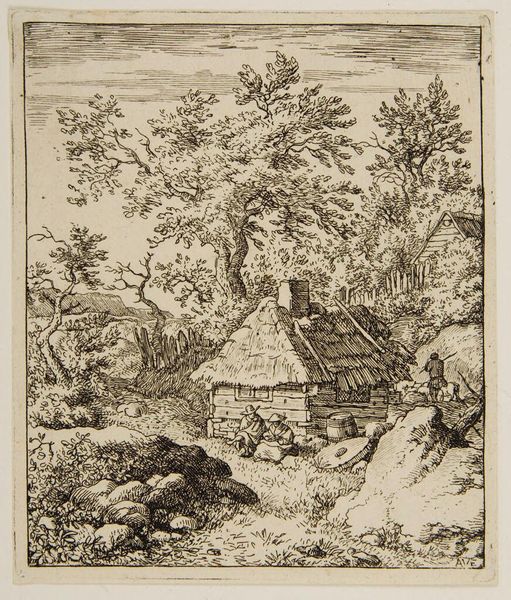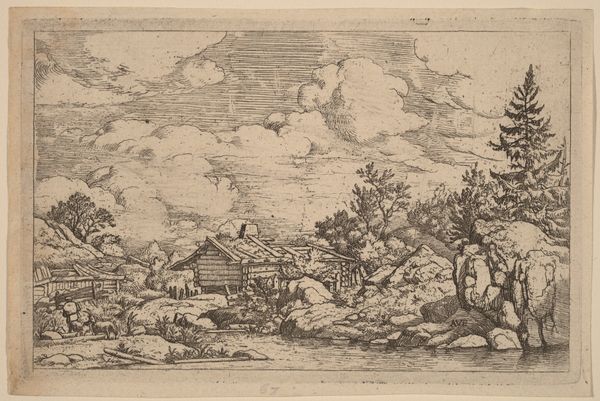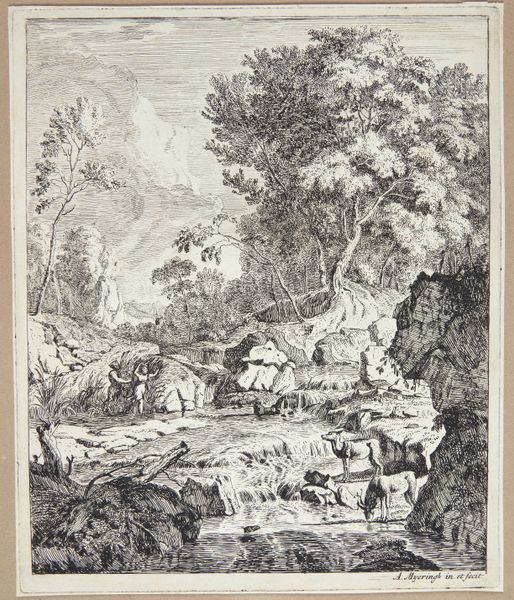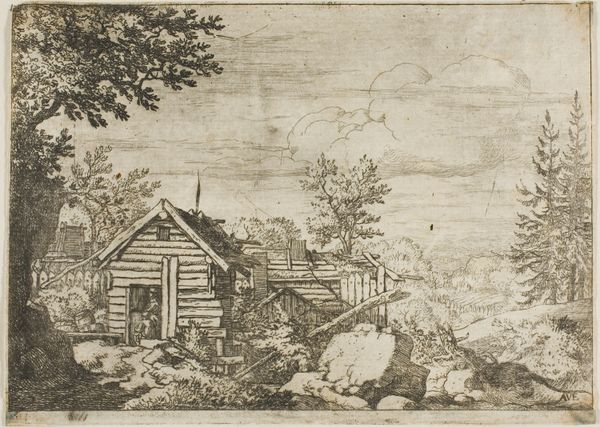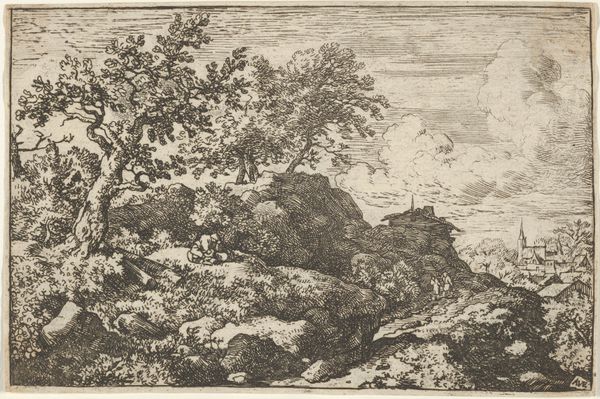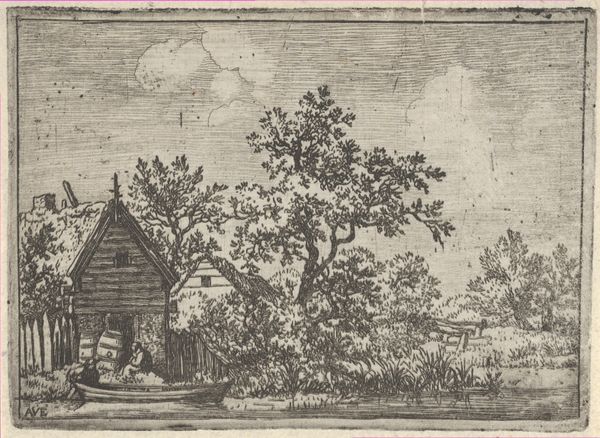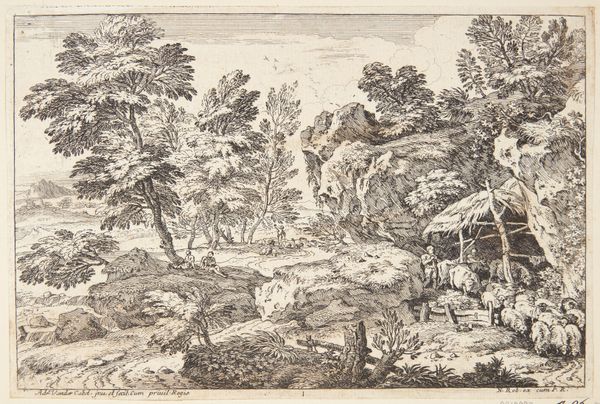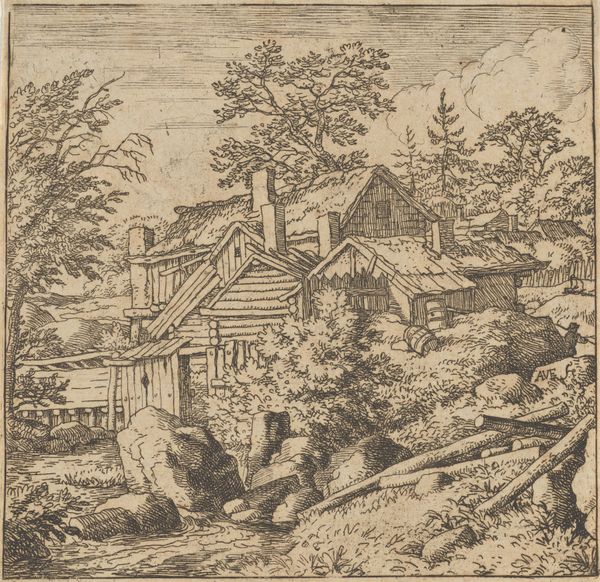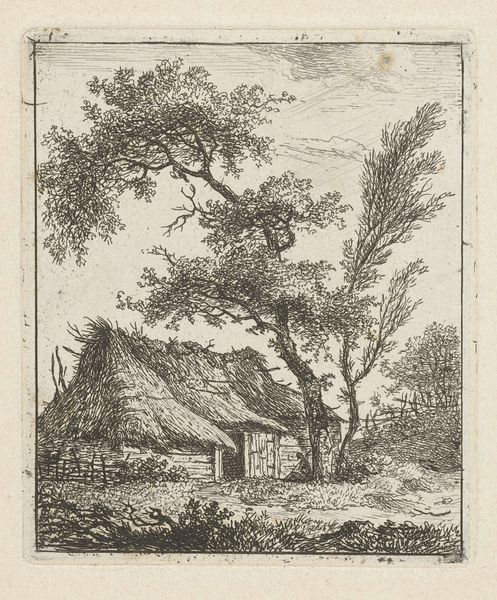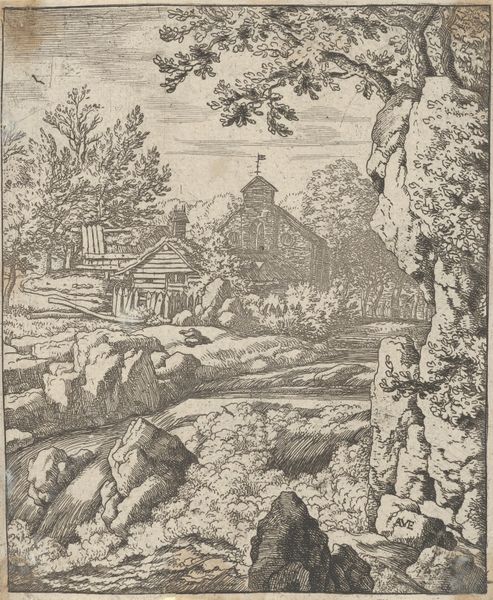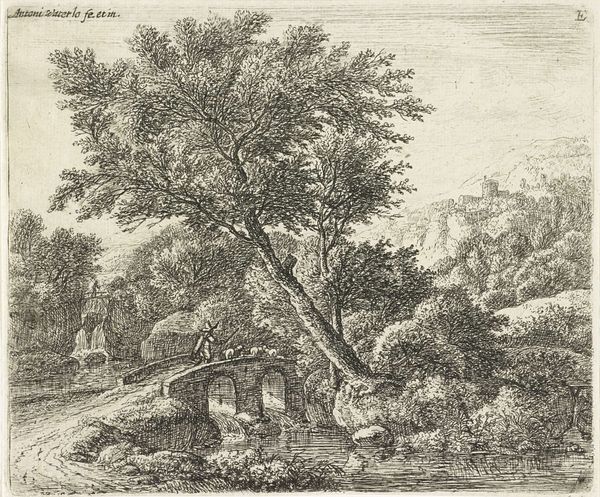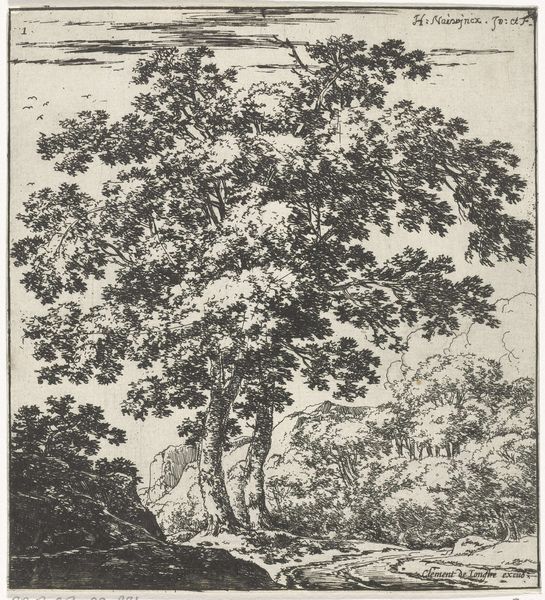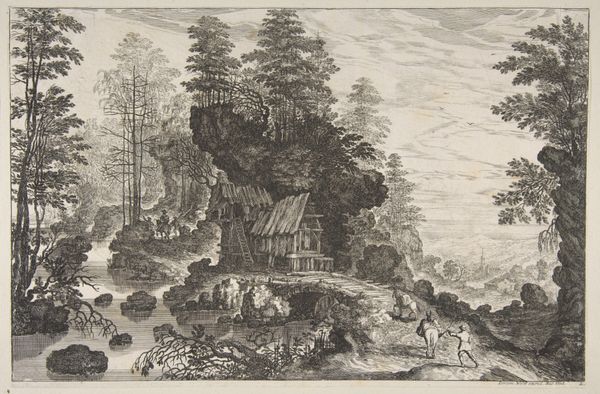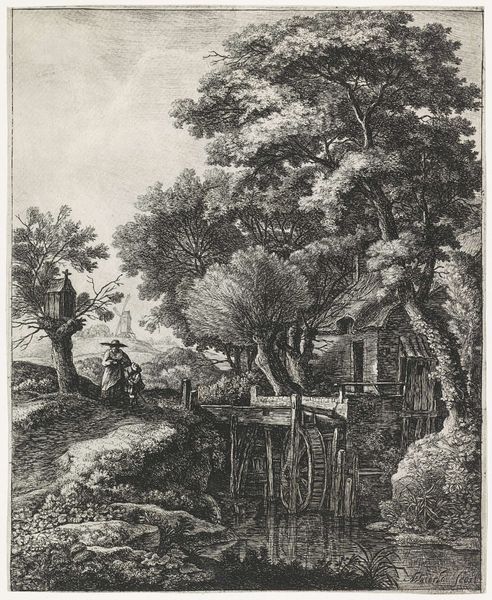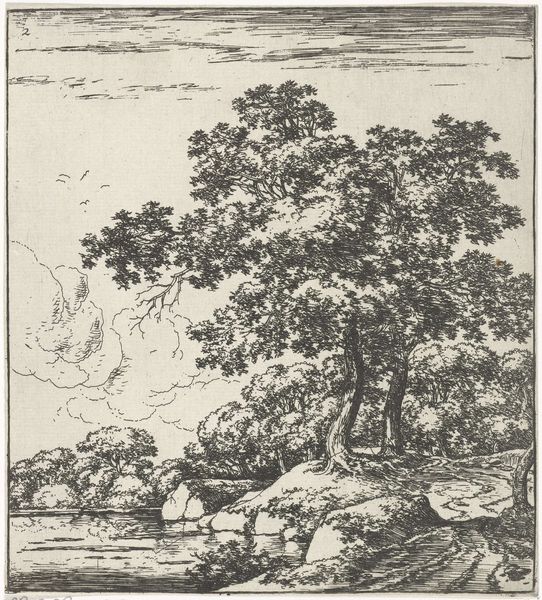
drawing, print, etching, architecture
#
tree
#
drawing
#
narrative-art
#
baroque
#
dutch-golden-age
# print
#
etching
#
landscape
#
etching
#
figuration
#
architecture
Dimensions: Sheet: 5 1/16 × 4 5/16 in. (12.8 × 10.9 cm)
Copyright: Public Domain
Curator: Looking at "The Millstone near the Cask," an etching by Allart van Everdingen created sometime between 1621 and 1675, now at the Metropolitan Museum of Art, I'm immediately drawn to how idyllic this scene seems. Editor: It strikes me as quite insular, a tiny world held within these carefully etched lines. The thatched cottage and figures seem dwarfed by the surrounding landscape, and also enclosed. What stories are hidden here, do you suppose? Curator: Considering the context of the Dutch Golden Age, landscape art served as more than just pretty scenery. It can be tied to notions of Dutch identity, independence, and a sort of reclamation of space through art. What does the imagery evoke for you? Editor: The millstone itself speaks volumes. Historically, millstones represented labor, community, and the daily grind of existence, literally and figuratively turning grains into sustenance. I wonder if Everdingen is hinting at the unseen work that sustains even the most tranquil-seeming life? It's positioned so prominently near the cask as if connected, drawing parallels. Curator: It's interesting you point that out because labor in these Dutch landscapes were almost always represented through a particularly gendered lens, often linked to domesticity. But, also through control of resources, impacting broader discussions about economy and societal hierarchies in the Netherlands. What does the placement mean for this narrative? Editor: And the placement also suggests resilience, perhaps even defiance. These seemingly insignificant figures have not just settled; they have carved out an existence, their home resting comfortably between nature's millstone and their labor. Perhaps their community is indeed about something more than gender dynamics—this represents their attempt to make this spot an anchor point for community or future stability. Curator: The figures, they appear as shadows almost, aren't they? Anonymous workers existing adjacent to what you suggest. Maybe even showing their place is set in motion, yet small? Editor: Right, perhaps suggesting the cyclical nature of human endeavor—the stone turning, life evolving—these figures pause, but it is a moment caught, frozen. Curator: I'm fascinated by what those etch marks conceal. What might the original commissioner infer about identity and status observing Everdingen's artwork during its era? What do we overlook? Editor: It does invite prolonged, repeated examinations into its historical roots and to where this stream may take us when we leave the frame. Thank you, I really have new things to consider here.
Comments
No comments
Be the first to comment and join the conversation on the ultimate creative platform.
